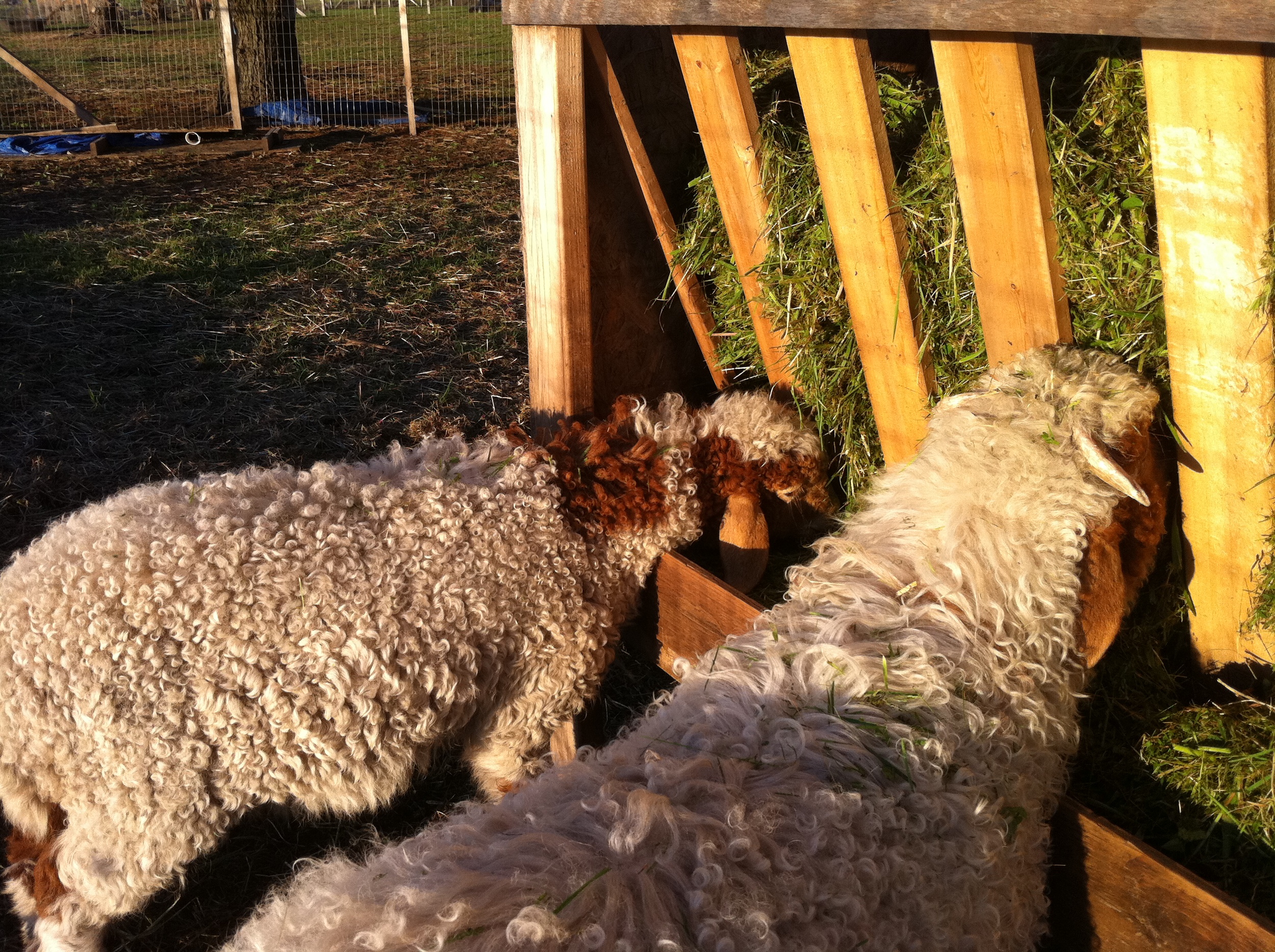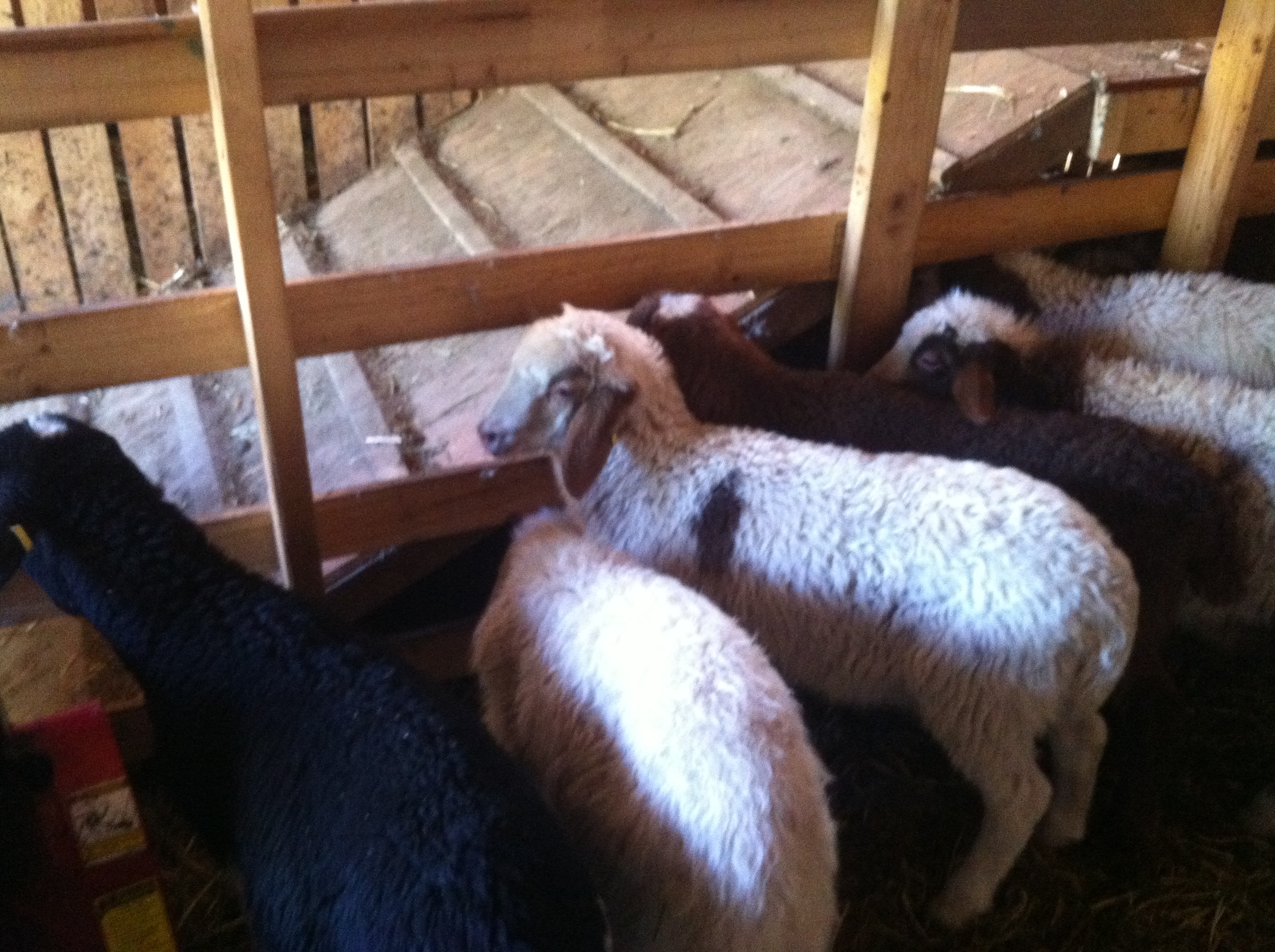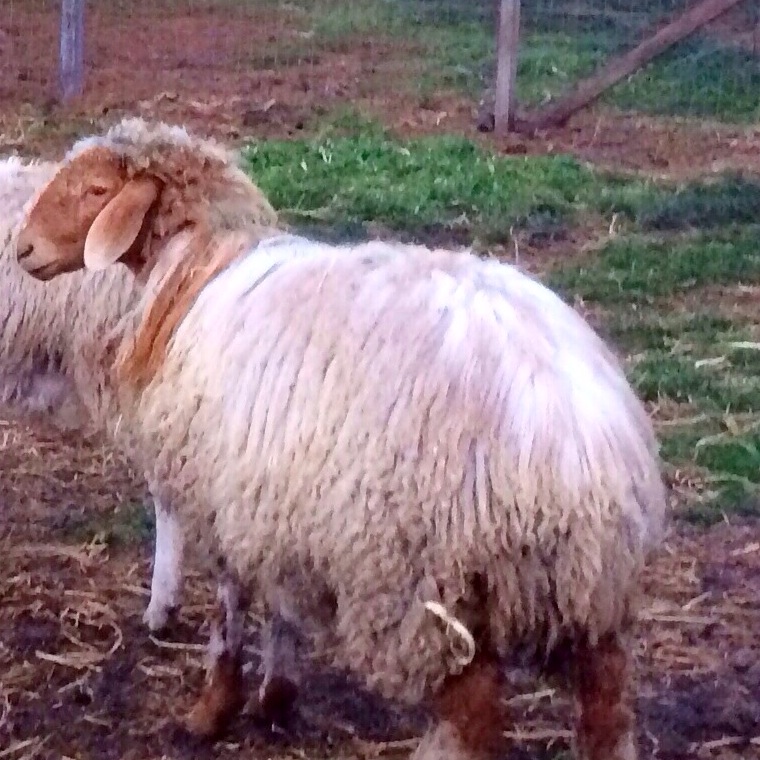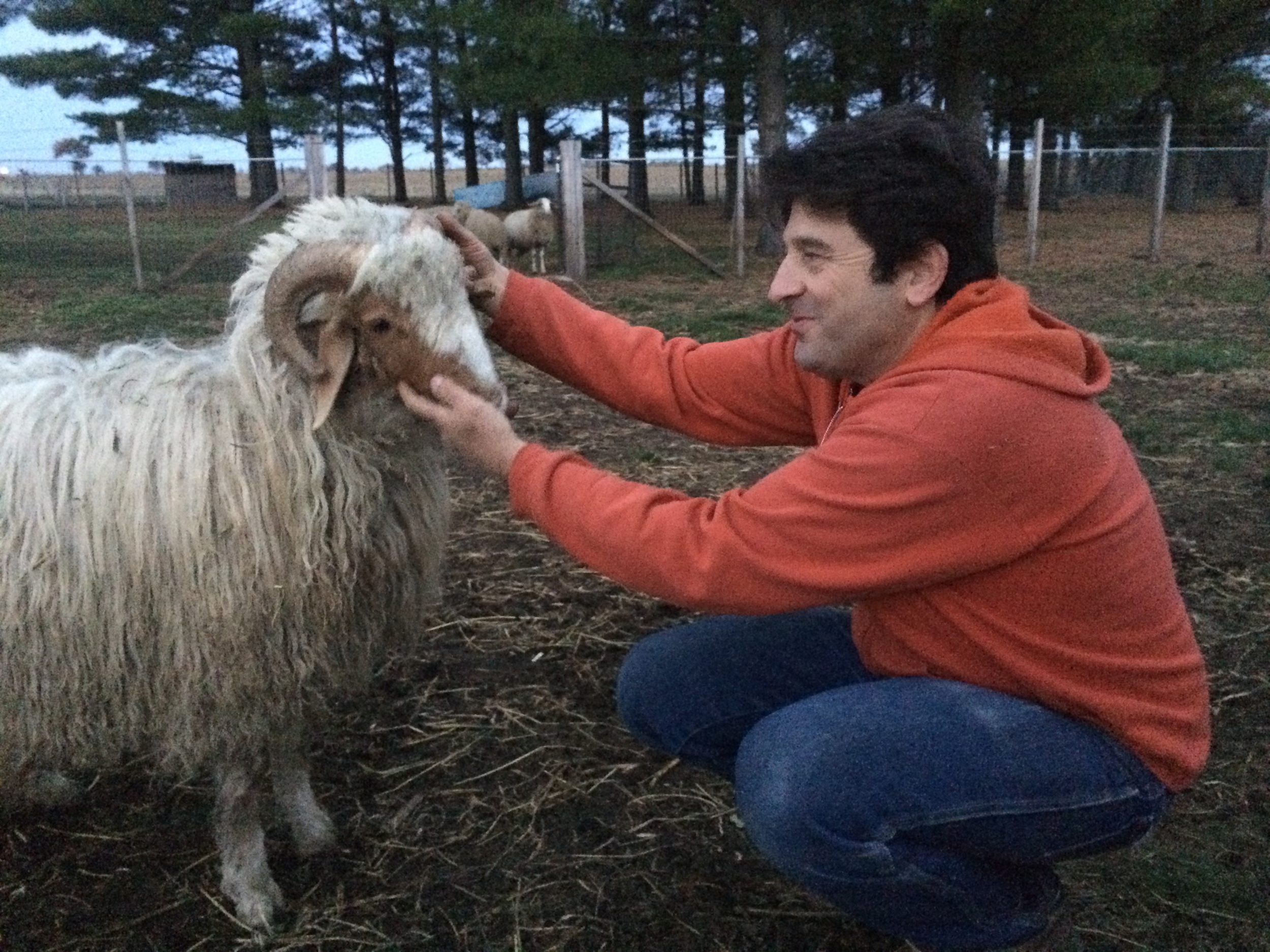Milking Katahdin Sheep
Raising sheep for meat is becoming more common in the US but it also becoming much more common for people to raise sheep for milk. Sheep milk is rich and delicious. It can be used to make a variety dairy products. New sheep dairies are springing up every year in the US and more hobby farmer's are looking into dairy sheep as an alternative or in addition to their dairy cows or goats. Large-scale sheep farmer's usually have access to dairy sheep breeds such as East Friesians and Lacaune's. These sheep have the longest lactation and highest daily production of any breed now in the US. A lot of the breeding stock for these breeds are found in area's where the large-scale sheep farms are located. This is generally around Wisconsin, New York and other parts of the North East. Unfortunately, the location of this breeding stock, is a bit too far for most of the hobby farmer's in the country, who are looking to add dairy sheep to their homestead. For people that can not find one of the still rare dairy breeds, it is possible for them to keep non-dairy breeds in order to milk them. Katahdins are one of the best non-dairy sheep breeds out there. They have many qualities that make them suitable for the small-scale or hobby farmer. So read on to find out why you may soon find yourself adding a few katahdins to your homestead.
Katahdins were developed as a hardy and prolific meat breed. This makes them an excellent substitute for a dairy sheep breed because they are easy to care for and they regularly lamb with twins and sometimes triplets. They are well-known for being able to feed all of these lambs without help from the farmer. If they have enough milk for their lambs, then they certainly have enough for you. A katahdin ewe, milked once a day, can produce between a pint and a quart of milk per day. With this breed, milk production depends on the ewe, some are just milkier than others. There is a variation in production as milk production hasn't been bred for specifically in this breed. However, a small-scale farmer starting with a small herd of katahdin sheep, can select only the milkier ewes when breeding for next year's lambs and after a few generations, one can produce a herd that produces more milk, more consistently.
Katahdins also make an excellent dairy breed for the hobby farmer because they are a hair sheep. This means they do not produce wool like many of their sheep counterparts. Instead, they are covered in hair which becomes very thick during the winter months and falls out quite cleanly for the spring. When this breed sheds, it looks as if it has been shorn. This makes them very low maintenance and this is part of the reason they were developed. Their growing popularity as a meat breed has a lot to do with the declining wool prices. It is no longer as lucrative for farmers to pay to have their sheep sheared regularly because the demand for wool has been slowly decreasing and therefore so have the prices. If this is true for larger-scale formers, then it is certainly true for the hobby farmers. Unless you would like to learn to shear your own sheep or you can find a shearer to shear just a few sheep for a reasonable price, then it is best just to go with hair sheep.
Another added bonus of raising Katahdin sheep for milk, is raising them for their true purpose which is meat. Sometimes those raising sheep for meat won't even consider milking them, the same goes for those raising sheep for milk, some won't consider them for meat, but this breed can easily be dual-purpose. As stated above,they are prolific and will regularly produce twins or triplets at lambing. Single lambs are actual quite uncommon for this breed. These lambs grow quickly due to all that rich milk the ewes produce for them. They continue to grow quickly when weaned to grass and grain. A katahdin lamb can easily reach 100lbs or more at 9 to 10 months of age. There is no affect on the growth rate of the lamb if the mother is milked once a day. In this scenario, the lambs are locked up away from their mothers at night. The ewes are milked in the morning and lambs are let out to spend the day with their mom. If one is looking to meet a certain weight by a certain time, the lambs can be creep fed like any other lamb.
Care for Katahdin sheep is similar to any other sheep breed. They require good forage but it doesn't have to be incredibly high quality, this breed isn't generally that picky. They need access to a good quality hay such as an orchard grass mix. They can be fed grain when dry but they require it when lactating. It is important to feed them well while they are lactating. Their daily milk production is directly related to their diet. it becomes evident whether or not they ate well the night before, come morning milking time. They can be given sweet feed, crushed alfalfa cubes and/pellets and beet pulp to increase their milk production. They also require free-choice minerals or minerals mixed their feed just like all other livestock but it cannot have copper in it,m as this is toxic to all sheep breeds.
A few Katahdin sheep, could provide you with rich milk, delicious cheese, sweet yogurt and fragrant soaps, so why not try adding a few to your homestead?
 Most people in the US are unfamiliar with Dairy Sheep Breeds so it comes as no surprise that many have not heard of the Awassi. Up until now, only two breeds of dairy sheep have been available in the US, the EastFriesian and the Lacaune. Two dairy sheep breeds from from Germany and France, respectively. Now a third breed joins us. The Awassi is a triple purpose breed of sheep used for it meat, wool and milk but primarily kept for it's milk. This breed is usually said to be from Israel but it can be found in many Middle Eastern Countries as it is the primary breed of sheep raised in that region of the world. Aside for it high milk production, the breed is know for its hardiness. The breed has been developed under a nomadic model in some one of the harshest environments on the planet, so one can see how it has become such a resilient breed of sheep. Dairy sheep tend to be rather fragile, the Awassi breaks that mold.
Most people in the US are unfamiliar with Dairy Sheep Breeds so it comes as no surprise that many have not heard of the Awassi. Up until now, only two breeds of dairy sheep have been available in the US, the EastFriesian and the Lacaune. Two dairy sheep breeds from from Germany and France, respectively. Now a third breed joins us. The Awassi is a triple purpose breed of sheep used for it meat, wool and milk but primarily kept for it's milk. This breed is usually said to be from Israel but it can be found in many Middle Eastern Countries as it is the primary breed of sheep raised in that region of the world. Aside for it high milk production, the breed is know for its hardiness. The breed has been developed under a nomadic model in some one of the harshest environments on the planet, so one can see how it has become such a resilient breed of sheep. Dairy sheep tend to be rather fragile, the Awassi breaks that mold.


